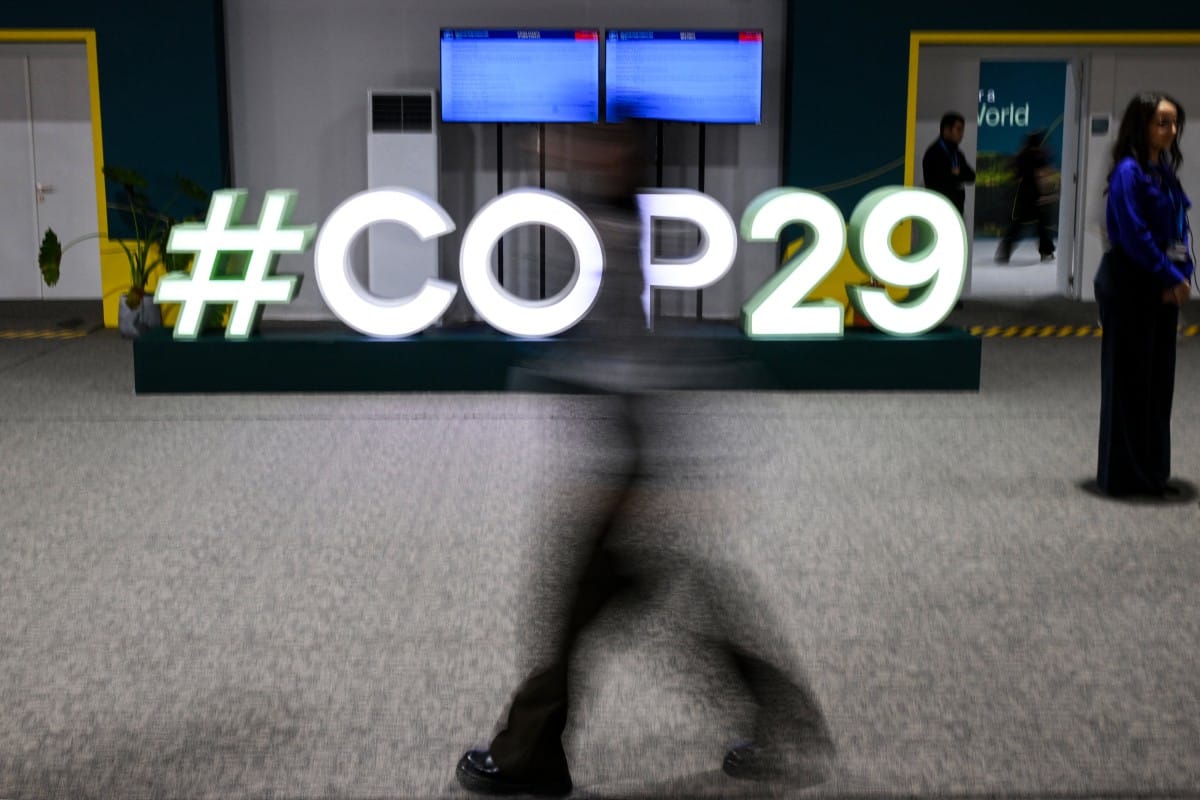
Attendees walk past the COP29 logo during the United Nations Climate Change Conference (COP29) in Baku, Azerbaijan, on November 21, 2024. Agence France-Presse
BAKU — The deal reached at UN climate talks in Azerbaijan ramps up the money that wealthy historic emitters will provide to help poorer nations transition to cleaner energy and adapt to global warming.
Here are the main points of the agreement reached at COP29 in Baku:
Article continues after this advertisement $300 billionUnder a framework established by the UN in 1992, 23 developed countries — and the European Union — historically responsible for most planet-heating emissions are obliged to contribute to climate finance.
FEATURED STORIES GLOBALNATION Putin signs law letting Ukraine fighters write off bad debts GLOBALNATION Even with access to new obesity drugs, some people don’t lose weight GLOBALNATION Laos government says 'profoundly saddened' by tourist deathsREAD: UN members agree on $300B a year for poor countries in a compromise deal
The Baku accord raises the amount of money that developed countries must provide to at least $300 billion per year by 2035.
Article continues after this advertisementIt is higher than the $100 billion that is currently required under a previous agreement that runs until next year.
Article continues after this advertisementBut it falls well short of the $500 billion that some developing countries had demanded at the fraught negotiations in Baku.
Article continues after this advertisementThe deal states that the money will come directly from a “wide variety of sources” including government budgets, private sector investment, and other financing.
It also cites “alternative sources” — a reference to potential global taxes under discussion on the aviation and maritime industries, and the rich.
Article continues after this advertisementREAD: A proposed deal on climate cash at UN summit highlights split between rich and poor nations
The hope is that the money from developed countries will help boost private investment to reach an ambitious goal — written into the deal — of delivering at least $1.3 trillion per year by the next decade.
That is the amount that experts commissioned by the United Nations said was needed by 2035.
“With these funds and with this structure, we are confident we will reach the 1.3 trillion objective,” EU climate commissioner Wopke Hoekstra told fellow COP29 delegates.
China roleThe United States and EU had pushed to broaden the donor base to include countries that are still listed as developing but have now become wealthy, such as China and Saudi Arabia.
But China, the world’s second-biggest economy and top emitter of greenhouse gases, has steadfastly refused to change its status while recalling that it already provides bilateral aid.
The deal states that developed nations would be “taking the lead” in providing the $300 billion — implying that others could join.
The text “encourages” developing countries to “make contributions” that would remain “voluntary”.
There was one novelty: the climate finance that developing countries such as China provide via multilateral development banks will count towards the $300 billion goal.
“It is also a matter of fairness and of importance to us that all those with the ability to do so should contribute,” Hoekstra said.
“Therefore it is good, given the size of the problem, that we enlarge the contributor base on a voluntary basis.”
Share of moneyThe negotiations were also the scene of disagreements within the developing world.
The Least Developed Countries (LDCs) bloc had asked that it receive $220 billion per year, while the Alliance of Small Island States (AOSIS) wanted $39 billion — demands that were opposed by other developing nations.
The figures did not appear in the final deal.
Instead, it calls for tripling other public funds they receive by 2030.
Subscribe to our daily newsletter
The next COProyal circle club, in Brazil in 2025, is expected to issue a report on how to boost climate finance for these countries.
READ NEXT Australia says talks ongoing for release of ‘Bali Nine&#... Scaffolding, traffic chaos as Rome readies for pope’s Ju... EDITORS' PICK Glaiza de Castro leads ‘58th,’ film on Maguindanao massacre Laos government says ‘profoundly saddened’ by tourist deaths Fire hits Isla Puting Bato in Tondo, Manila Chiz appeals to VP’s close circle after her ‘possibly criminal’ rant NBA: Nuggets use big 3rd quarter to pull away from Lakers Putin signs law letting Ukraine fighters write off bad debts MOST READ Asean defense ministers renew push for code of conduct LIVE: Gilas Pilipinas vs Hong Kong at Fiba Asia Cup Qualifiers Agot Isidro, Erik Matti react to Sara Duterte’s kill remark vs Marcoses, Romualdez NDC chief resigns, plans return to private sector Follow @FMangosingINQ on Twitter --> View comments